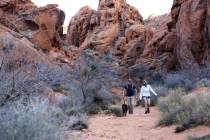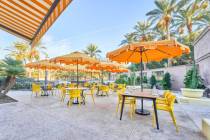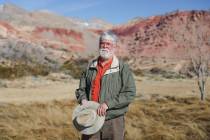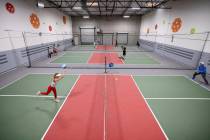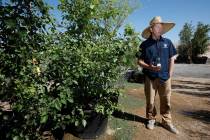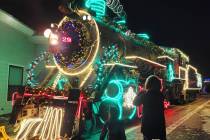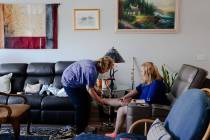In search of robbed time: The long, hard struggle of Windsor Park
In the summer of 2020, as COVID dominated the news and traffic deserted the streets of Southern Nevada, I returned to a North Las Vegas neighborhood I’ve known since childhood, Windsor Park. Situated near the intersection of Martin Luther King Boulevard and Carey Avenue, the historically Black neighborhood was the result of the Federal Housing Act of 1954, which granted funding to local governments to develop urban housing. According to a government summary issued that year, funding was conditioned on municipalities implementing housing programs that used “all means available to eliminate and prevent slums and urban blight.”
Built between 1964 and 1966, Windsor Park housed Black people when unofficial segregation was prevalent in valley housing patterns. But Windsor had a serious problem from the start: It had been built on top of geological faults and an aquifer — groundwater that was being pumped out to a parched valley while Windsor Park sank. 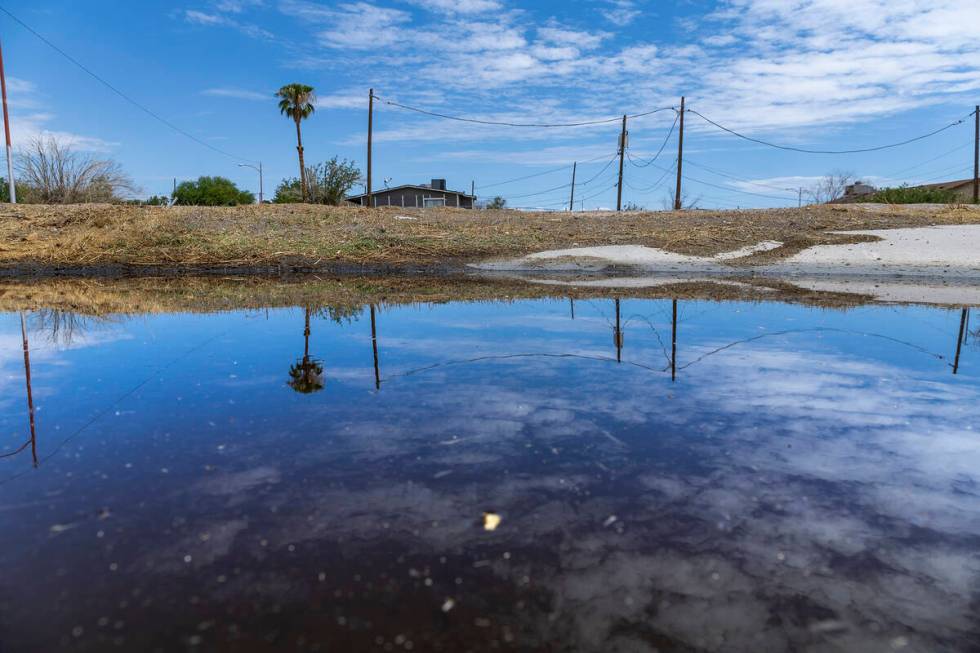
I had memories of a place already in strange physical decline in the 1990s, but what I saw now showed the deep damage of the decades that followed: roofs on houses slanting in unintended directions, cracks in pavement defining the neighborhood’s roadways, stand-alone foundations in otherwise vacant lots where families had once lived. All of this contrasted with one of the valley’s most spectacular views of the Las Vegas Strip.
As a student at UNLV’s Boyd School of Law, I set out to learn more about this sad state of affairs, and what was being done about it. For nearly two years, I was a research assistant on a Windsor Park project brought to the school by then-assemblywoman Dina Neal, who is now a Nevada State Senator and has spent years working on the issue. I also participated in the creation of a 2021 documentary film, Windsor Park: The Sinking Streets, by contributing voice-over and research. (In the wake of the film’s premiere, North Las Vegas city officials released a statement saying that they had been appealing to state and federal officials for help addressing the problems for two years, and would continue to do so.)
During my research, I spoke with elected officials and with residents of Windsor Park who claimed the city government’s inadequate planning and neglect over the past half-century has robbed them of the American Dream — in particular, the dream of creating generational wealth, or at least a measure of financial stability, through home ownership.
But on a deeper level, something more fundamental had been lost: time. For decades, as Windsor Park families have pursued some kind of reasonable remedy, children have grown up, grandparents have passed, and the opportunity to build a better life has, in many cases, slipped away. What should be a haven — the home, the neighborhood — instead became a quiet rolling catastrophe, a nagging distraction from the deeper challenges and joys of life.
By the summer of 2022, when I graduated from Boyd, I’d learned a great deal about this neighborhood not far from my grandmother’s house, where I’d spent time growing up. I’d learned that Windsor Park was still dying, that its residents were still seeking restitution, or — for the resolute, and for those simply unable to move — a way to save the place. I’d learned of the policy battles that had yielded mostly frustration.
As November’s North Las Vegas mayoral election approaches, candidates are at at least acknowledging that frustration, and the attention comes not a moment too soon: If you look at a satellite image today, you’ll see blocks of vacant parcels punctuated by the occasional house. North Las Vegas is the fifth fastest-growing city in the United States over the past two years, according to Census Bureau figures, but Windsor Park is slowly disappearing.
• • •
“If they’d done the right thing at the start,” Myrtle Wilson says, “we wouldn’t have the problems we are having now.”
Wilson has known the Westside nearly her entire life, as her family moved to Las Vegas from Louisiana when she was just two years old. Wilson moved to Windsor Park in August 1965. She raised three children who all went to nearby C.V.T. Gilbert Elementary School. Having recently turned 80, she is still seeking redress for the damage that subsidence has caused to her home and others.
Vincent Richardson, now a professor at the College of Southern Nevada and an equity and diversity coordinator for the Clark County School District, grew up in Windsor Park in the 1980s not far from Wilson’s house. “I remember one time, when I was a child, I caught myself going to McDonald’s. I might have been like 5 years old,” he says. “I went around the corner to Clayton Street — maybe about four or five houses down — and a lady named Miss [Myrtle] Wilson saw me. She brought me in and said, ‘Hey, little boy, where are you going?’ And she kept me in her house until they found out who I belonged to. And that’s the kind of neighborhood we had.”
The development of connections between Richardson, Wilson and other neighbors helped build identity within the community. “The sense of community wasn’t that they were just neighbors,” Richardson says. “They were family members.”
But as the neighborhood slowly sank, the community changed.
“I went to a city hall meeting, and I blatantly told the mayor that you wouldn’t allow this to happen in your neighborhood,” Richardson says. “It’s almost like you’re pigeonholing us and saying, ‘OK, you do own this home, but here’s what you can do.’ And it’s upsetting.” 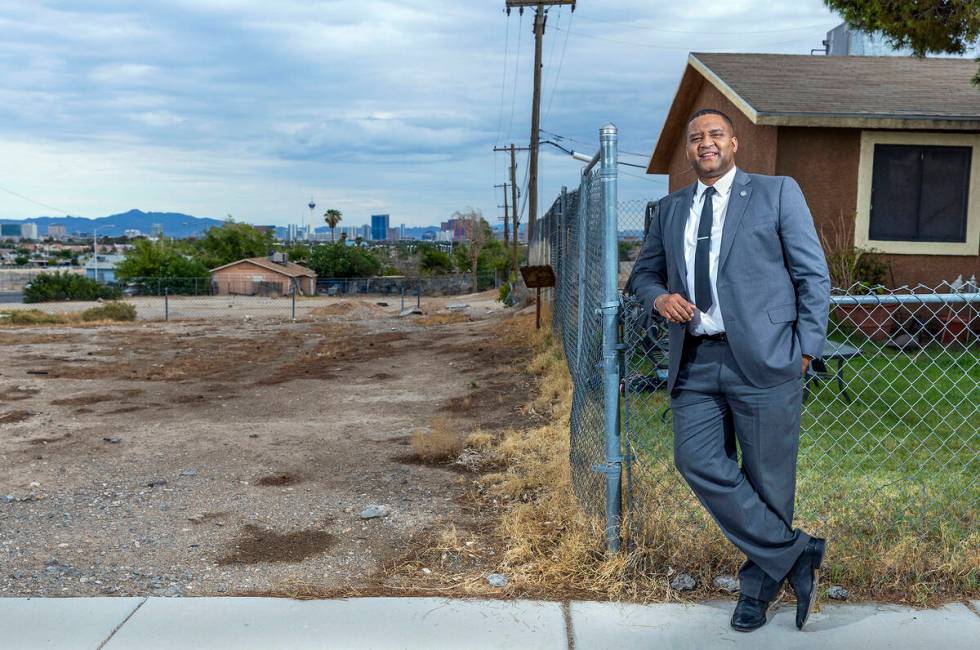
That frustration comes from a restrictive city ordinance resolution. On November 20, 1991, North Las Vegas Resolution 1606 suspended the issuance of permits required for residents to make improvements to their property, such as building housing additions. The resolution expressly stated “No building, electrical, or plumbing permit shall be issued for the construction of any new building or any addition to an existing building nor shall application for rezoning reclassification or change of use be accepted in the Windsor Park subdivision revitalization project.”
The measure was the City’s attempt to avoid further damage from the subsidence. But this effectively took control out of the residents’ hands when it came to making decisions for their own homes.
“I remember Reverend Miller wanted to get something added on, on to his house, and he was denied,” Richardson says. “I thought about adding an addition to the house eventually. But then, with all the headaches Reverend Miller had, I just said, ‘Forget it.’”
• • •
As I became more acquainted with the residents of the community, I learned that thousands of hours that could have been spent on work and family life were spent alerting officials of structural foundation issues with their houses at city council meetings. Residents told me of the phone calls they made, the letters they sent, the neighborhood meetings at C.V.T. Gilbert Elementary School and local churches such as Greater Faith in an effort to find solutions. They told me about the assurances from elected officials that have gone unfulfilled.
At the April 5, 1993 Assembly Ways and Means Committee meeting during the 67th Session of the Nevada State Legislature, the project manager for Windsor Park testified that $5.4 million was needed “to reestablish their living conditions to the standard that once existed in Windsor Park.”
The $5.4 million figure stands out, since a 1988 U.S. Housing and Urban Development Department study, surveying the damage in Windsor Park, estimated $12 million to $14 million was needed to rectify the problem.
In the years that followed, a neighborhood founded on the intention of providing Black people their own housing fell into into a decades-long battle between residents of the community and the City of North Las Vegas.
“Once I’m gone,” Wilson says, “my kids will have to take up the fight with North Las Vegas if they’re going to continue to stay there.”
• • •
In 2019, the City held a hearing on a developer’s request to build a 1.6 million-square-foot warehousing facility on 86 acres of undeveloped land next to Windsor Park. Residents asked: Why allow a developer to build such a vast project next to Windsor Park but deny community members who have felt unheard for decades permission to make improvements to their homes?
After opposition from residents, the 2019 plan was scrapped. It seemed like a victor 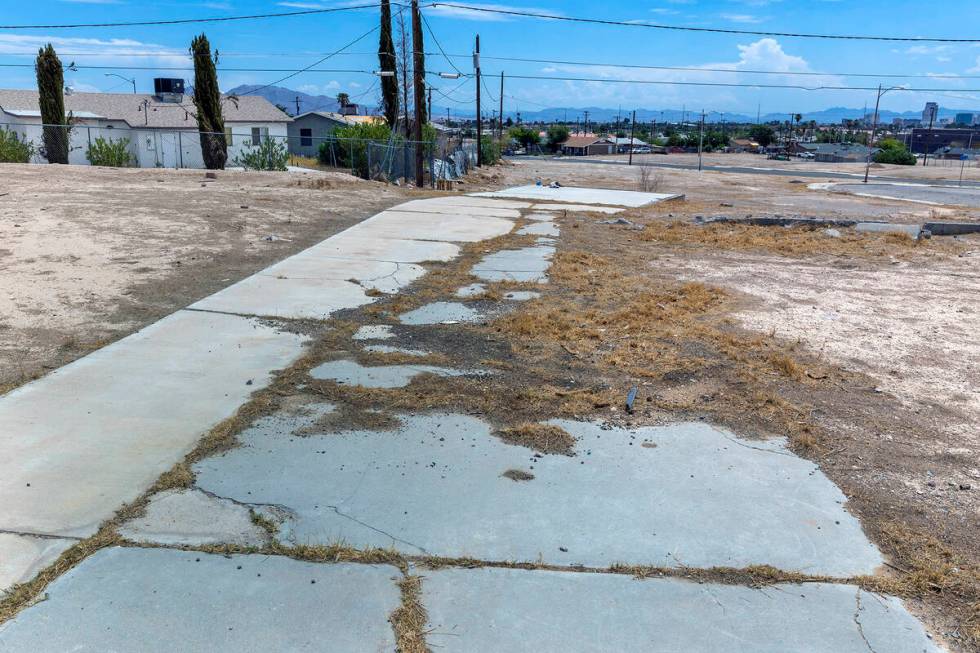
In 2021, I’d asked North Las Vegas Ward 2 Councilwoman Pamela Goynes-Brown, whose constituency includes the residents of Windsor Park — and who is now running to become mayor of North Las Vegas — how a warehouse could be built, but not a new home. Goynes-Brown told me that a warehouse has more room and resources to build a structurally sound foundation. But if the land surrounding Windsor is destined for larger-scale structures, the problem remains of what to do with Windsor Park itself, where homes still stand and people still live and land still sinks and a neighborhood struggles to survive.
• • •
Vincent Richardson is the grandson of Johnnie Richardson, who serves as Pastor of Macedonia Baptist Church. In September 2020, I visited the church for a community meeting regarding the future of Windsor Park.
During that meeting, I heard accounts from Pastor Richardson, Annie Walker, and Myrtle Wilson. As the meeting progressed, so did my understanding of frustration in a community that has felt neglected for nearly three decades. The residents shared concerns and frustrations they’d been sharing for years, and the frustration was palpable.
After the meeting, I had a striking exchange with a man who showed me a parking citation from the City of North Las Vegas, for having an old car sitting in the front of his house.
I felt a sense of irony while inspecting the ticket, as I’d just spent hours listening to residents voice their concerns about the lack of neighborhood upkeep by the city.
When I looked up, I caught the man scanning the puzzled look on my face. I asked him how he could get a ticket for this, if the city doesn’t maintain the vacant lots that it owns in Windsor Park.
“It doesn’t make sense, right?” he said.
While community members feel a lack of control over their property, it is still their property. Holding on to these homes is personal. Having the community receive the attention they feel it deserves is personal.
“I think about my grandparents who were sharecroppers, you know, who came to Vegas for a better life, who provided a better life for myself, you know, and how many generations of kids who came through their house,” Vincent Richardson says. “You know that house is always a place of refuge.”
• • •
“Fifty thousand dollars? What was that going to do?” Wilson asked me last September.
I’d caught up with her at the Dr. William U. Pearson Community Center on Carey Avenue. I asked her about the City’s 1997 offer for $50,000 to help Windsor Park residents move to a new home in North Las Vegas. The $50,000 grant was increased to $100,000 in 2004.
Hadn’t she at least considered moving?
“Why would I move and start up a new mortgage?” she asked.
Her answer addressed an important equity issue: Moving is expensive, and comes with a whole new round of credit requirements. A significant portion of residents felt the 1997 offer was unfair. Several dozen families accepted the offer, but some of the families who stayed felt that they could not buy a comparable house for $50,000, or even $100,000. As for the older residents who had paid off their mortgages, starting a new mortgage at their age or going back to work in order to make new mortgage payments wasn’t feasible for many of them.
“Fix the people’s houses that are still living up there,” Wilson says, “so that we can stay where we want to stay instead of where you’re going to point us to stay.”
• • •
“Acknowledgment needs to be at the forefront,” said Pastor Richardson at the beginning of the September 2020 meeting at Macedonia Baptist. Pastor Richardson made the statement in the context of Windsor Park, but that sentiment is true even when you broaden its application.
My family and families in other houses in North Las Vegas and the Historic Westside all had one thing in common when Windsor was built: They lived there because of de facto segregation practices carried over from an era that earned Las Vegas the nickname “Mississippi of the West.” In those days, the segregated areas where our families lived were considered a significant distance from Downtown and its financial opportunities. A pragmatist will tell you that this segregation was predicated on economics and their Black skin. 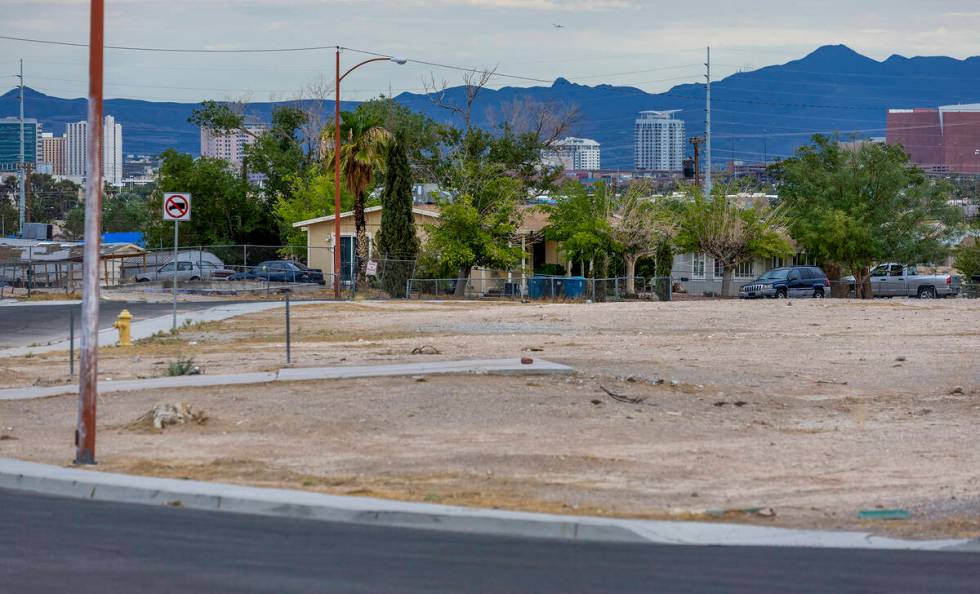
As redevelopment reshapes historically Black neighborhoods in the Westside and North Las Vegas, it’s imperative to acknowledge the environmental inequities these communities have faced. The communities constructed — and reconstructed — today will affect the lives of future generations of Las Vegas Valley families
Windsor residents have asked for solutions such as mixed-use development, which could include retail options or even a grocery store, as the neighborhood has long been known as a food desert. Ultimately, my sense is that the most desired scenario for the residents is to see improvements to their homes.
Windsor Park is a complicated case, but the costs to residents are simple: time, money, uncertainty, and insecurity. In my exploration of Windsor, I’ve poured through stacks of legislative reports, city council minutes, and geology reports. I’ve learned from spending many hours with the residents. I’ve learned from legislative testimony that the main impediment to a solution was, as it always seems to be, funding. I learned of a pattern of buck-passing between state and federal governments regarding funding a solution. I get it: Urban planning is expensive and filled with complexities.
But the main lesson I learned was the importance of sound policies addressing the needs of Black and other marginalized communities in the Las Vegas Valley. Prudent consideration in the redevelopment of these communities can do more than help Black families in closing the racial-wealth gap. In the case of Windsor’s residents, it can also reduce the difference in the racial-time gap. A firm commitment to addressing environmental inequity will reduce the need for residents to spend their evenings gathering at community meetings in search of solutions to their sinking houses. The families of Windsor Park, like so many Black families everywhere, have had enough time robbed already. ◆
Sebastian Ross is a law clerk at the Eighth Judicial District Court of Clark County. The views expressed here are those of the author and not the court.




